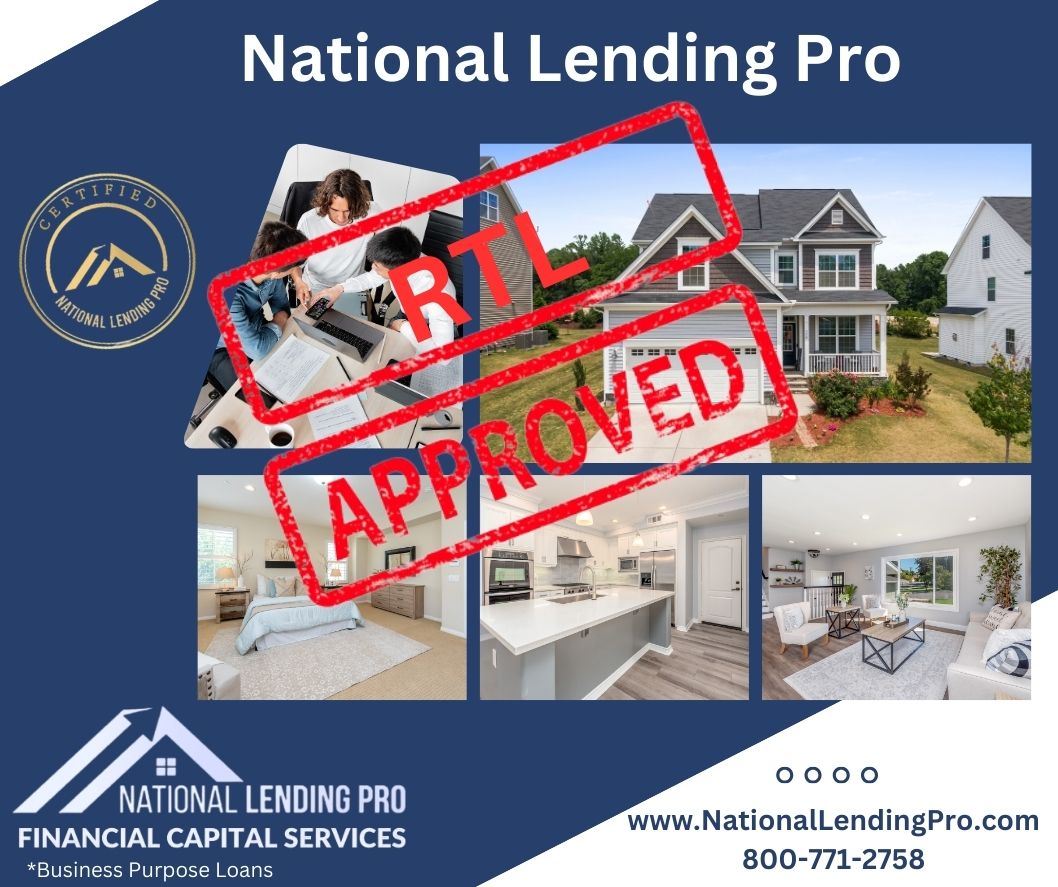What is a Residential Transition Loan (RTL)?
Well the way we see it it is just A Rose By Another Name! Wall Street Guys Use it why shouldn’t the rest of us? Bet you are thinking back to the first time you heard the word Coupon instead of Interest. Same here! A Residential Transition Loan (RTL) is a short-term financing option designed specifically for real estate investors and developers who are in the process of purchasing, renovating, and reselling or renting residential properties. Often referred to as “fix-and-flip” loans, these loans cater to those looking to capitalize on residential properties that require some degree of rehabilitation or remodeling before they can be resold or rented out for profit. RTLs are also used by investors needing quick access to capital to take advantage of time-sensitive opportunities, such as distressed properties or auctions.
Key Characteristics of RTLs
1. Short-Term Financing:
RTLs are typically short-term loans, with repayment periods ranging from 6 to 24 months. This aligns with the nature of real estate transitions, where the investor needs funds quickly to acquire the property, renovate it, and then either resell it (flipping) or refinance it under a longer-term rental strategy.
2. Flexible Qualification Criteria:
Unlike traditional mortgages, RTLs are often asset-based loans, meaning that lenders focus more on the value and potential of the property rather than the borrower’s personal financial profile. This makes RTLs an attractive option for investors who may not meet the strict criteria of conventional loans but have the experience and skills to maximize the property’s potential value.
3. High Loan-to-Value (LTV) Ratios:
RTLs often offer higher LTV ratios compared to traditional loans, sometimes up to 85-90% of the purchase price and a portion of the renovation costs. This enables investors to fund a significant portion of the project using borrowed capital. However, this also means that lenders take on higher risk, and as such, interest rates and fees are typically higher than conventional loans.
4. Interest Rates and Terms:
Interest rates for RTLs can range between 7% to 15%, depending on the lender and the borrower’s experience. Points, or upfront fees, usually range from 1% to 3% of the loan amount. The higher rates and fees reflect the short-term nature of the loan, the speed at which funds are disbursed, and the risk profile of the investment.
5. Quick Access to Capital:
One of the biggest advantages of an RTL is how quickly the funds are disbursed. Traditional mortgages can take 30 to 45 days for approval and funding, but RTLs can be approved and disbursed in as little as one week. This is essential for investors working in competitive markets or with distressed properties that require immediate action.
When to Use a Residential Transition Loan?
Fix-and-Flip Projects:
RTLs are a popular option for investors purchasing distressed properties, making renovations, and then selling the property for a profit. Since the loan terms are short, this aligns well with the investor’s timeline to complete the renovation and resale.
Bridge Financing:
RTLs can also serve as bridge loans, providing short-term financing to bridge the gap between the purchase of a new property and the sale of an existing one. This is especially useful in a competitive market where investors need to act quickly to secure new properties.
Rental Property Repositioning:
For investors looking to purchase and renovate properties to hold them as rentals, an RTL can provide the initial capital for acquisition and renovation, with the intent to refinance into a longer-term rental loan once the work is completed and the property has stabilized.
Conclusion
Residential Transition Loans are a vital tool for real estate investors looking to quickly acquire and rehabilitate residential properties. With flexible qualification requirements, short approval times, and the ability to fund a large portion of the project, RTLs provide the capital needed for investors to capitalize on time-sensitive opportunities and maximize the potential of underperforming assets. However, due to their short-term nature and higher costs, RTLs are best suited for experienced investors with a clear plan for property renovation and resale or refinancing.






